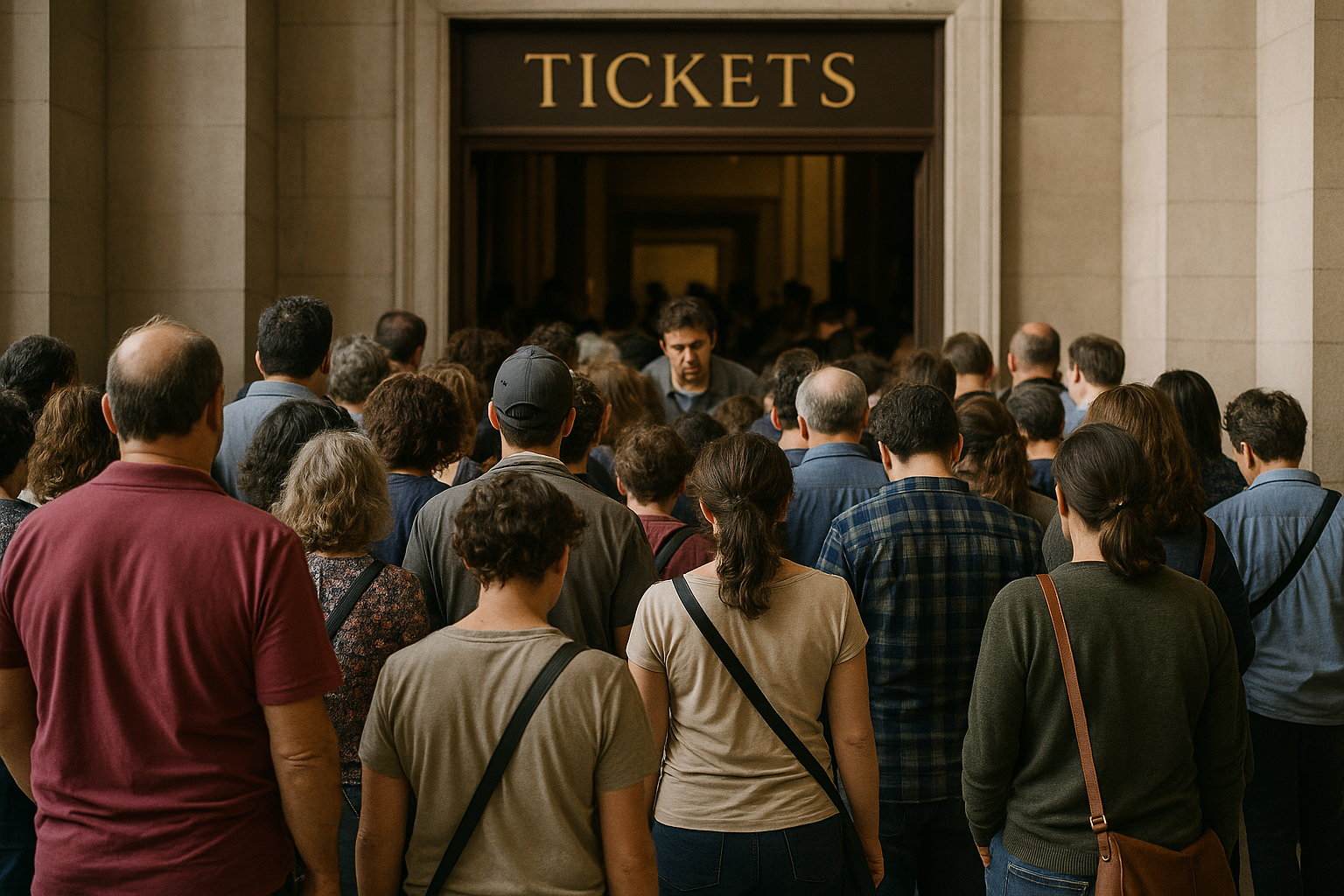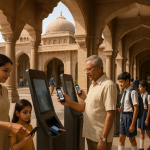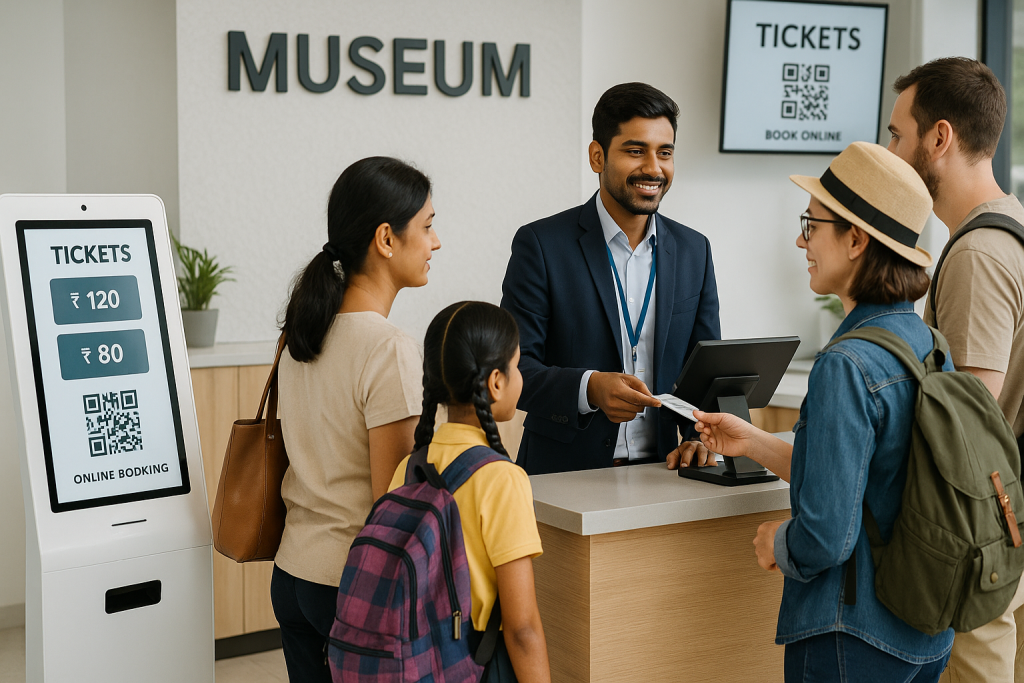Museum ticketing software could have prevented what I witnessed last Saturday morning—a retired couple from Pune turning away from a heritage museum in Jaipur after standing in the ticket queue for 35 minutes. They had driven four hours to get there. The ticket counter had only two staff members, both manually writing receipts. The UPI scanner wasn’t working. The couple’s son, who’d arranged this surprise anniversary trip, kept apologizing. They left to find a restaurant instead.
I know this because I was there, meeting with the museum’s curator who’d called me in desperation. Their “computerized system” was actually just an Excel sheet and a receipt printer. During peak season, they were turning away 200+ visitors daily not because of capacity, but because their ticketing process couldn’t handle the crowd. School groups would call to book and get told “just come and pay at the counter.” Corporate teams wanting to book after-hours visits? “Not possible in our system.”
Here’s what nobody tells museum owners in India: your ticketing software isn’t just about collecting entry fees. It’s what determines whether a family from Bangalore books your museum or the amusement park next door. It’s what decides if that corporate CSR budget goes to you or to your competitor across town. It’s the difference between a college student sharing your museum on Instagram or complaining about the “cash-only uncle at the counter” on Twitter.
I’ve spent the last five years analzying museums across India from a 200-year-old textile museum in Ahmedabad that sees 50 visitors on weekdays to a contemporary art space in Mumbai handling 2,000 visitors during exhibitions. The difference between museums scrambling every weekend and those running smoothly? It’s not their government grants. It’s not their location.
It’s seven specific features in their ticketing system that most museum owners in India don’t even know they need. We launched our ticketing software on global platform like product hunt.
Let me show you exactly what I mean.
7 Smart Features in Museum Ticketing Software
1. Unified Multi-Channel Ticketing
Modern systems integrate online sales, on-site POS, and self-service kiosks within a single workflow, ensuring seamless operations and consistent data across all entry points. This eliminates manual errors and channel fragmentation, so all sales and bookings are visible and manageable through one dashboard.
2. Contactless & QR-Based Admissions
Contactless ticketing via QR codes or mobile e-tickets allows for faster entry and more effective capacity management. Timed-entry controls help regulate visitor flow, reduce crowding, and accelerate throughput—all while enhancing safety and guest convenience.
3. Real-Time Analytics & CRM
Powerful analytics dashboards provide live insights into visitor data, sales trends, and repeat attendance. Integrated CRM features help track group bookings, membership status, and loyalty, helping museums target communications and grow their audience.
4. Automated Capacity & Time Slot Management
Automated systems can manage visitor flow with calendar-based reservations, time-slot controls, and capacity limits. This prevents overcrowding and enables museums to optimize exhibit access throughout the day.
5. Multilingual & Accessibility Features
Leading platforms offer multilingual interfaces and accessibility enhancements such as voice interaction or AI-powered chatbots. This ensures that local and international guests can easily book, understand offerings, and seek help, broadening the museum’s reach.
6. Secure & Flexible Payments
Robust payment processing, often supporting UPI, cards, wallets, or QR payments, brings convenience and security. Transaction records and instant confirmations reduce errors and support a trustworthy visitor experience.
7. Visitor Self-Service & Mobile Integration
AI chatbots, interactive maps, and mobile-first designs let visitors manage bookings, ask questions, and navigate the museum with ease. Self-service boosts efficiency for both guests and museum staff.
These features, when bundled in a museum ticketing platform, ensure smooth operations, superior visitor engagement, and valuable insights for growth and management.
Cost of Waiting: What Happens While You’re “Thinking About It”
Let me be direct with you.
Right now, while you’re reading this, someone in your city is searching “museums near me” on Google. Maybe they’re a parent planning next Sunday’s outing. Maybe they’re a corporate HR manager with ₹50,000 to spend on a team event. Maybe they’re a school coordinator trying to book 100 students for next month.
If they can’t book instantly on their phone, right now, at 11 PM while they’re planning their week—they’re booking your competitor instead. Not because your collection isn’t better. Not because your guides aren’t more knowledgeable. But because your competitor made it easy.
I’ve seen museum owners lose ₹8 lakh in annual school booking revenue because they didn’t have online group booking. I’ve watched weekend footfall drop 40% because visitors got tired of cash-only counters. I’ve seen museums spend ₹2 lakh on Instagram ads, only to lose those visitors at the “how do I book?” stage.
Here’s the truth: every month you delay upgrading your ticketing system, you’re not just missing revenue, you’re training your potential visitors to forget you exist.
That retired couple from Pune? They’re not coming back. That family who couldn’t use UPI? They’ve already told five other families about their experience. That school that couldn’t book online? They’ve found another museum that could.
Your collection deserves better than this. Your staff deserves better than this. Your city deserves better than this.
The museums winning right now aren’t the ones with the biggest budgets or the most artifacts. They’re the ones who decided that visitor experience starts before the visitor even arrives.
So here’s my question: How many more visitors are you willing to lose before you fix this?
The software exists. The features exist. The ROI is proven. The only thing standing between your museum and 30% more visitors is a decision you make today.
What’s it going to be?
Fill the inquiry form and book a free demo today.



